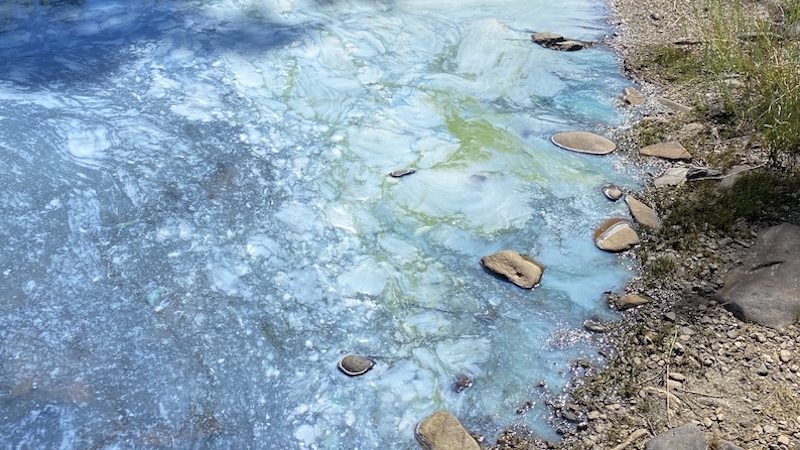
A planktonic blue-green algae resembling spilled paint has bloomed near the shore of a Nova Scotia lake. (Ministry of Environment and Climate Change)
As the weather warms, health officials are warning Nova Scotia residents to be on the lookout for blue-green algae.
Blue-green algae, also known as “cyanobacteria,” are made up of microscopic plant-like organisms that occur naturally in ponds, rivers, lakes, and streams.
The Nova Scotia Department of Environment and Climate Change says blue-green algae can look like spilled paint or pea soup. Sometimes it clumps up and looks like fine grass clippings underwater, and other times it looks like thick scum on the surface of the water.
Swimming in water with blue-green algae can cause itching and irritation of the eyes and skin. Swallowing or inhaling water may cause headache, fever, diarrhea, abdominal pain, nausea, and vomiting.
Health officials added that drinking blue-green algae water over a long period of time could cause liver damage.
For pets, exposure to blue-green algae can be fatal.
If you think you can see or have blue-green algae:
Do not touch algae or water. Be careful during recreational activities that involve splashing (such as boating), as you can inhale toxins. Be careful when eating fish caught in the water and avoid eating them in the liver, kidneys, and other organs as toxins can accumulate there. If you become ill, please see a doctor. If your pet ingests algae, contact your veterinarian immediately.
Health officials say anyone who believes they have sighted blue-green algae should treat it as potentially toxic and report it to their local Department of Environment and Climate Change office or call 1-877-936-8476. It is said that there is.
![]()



